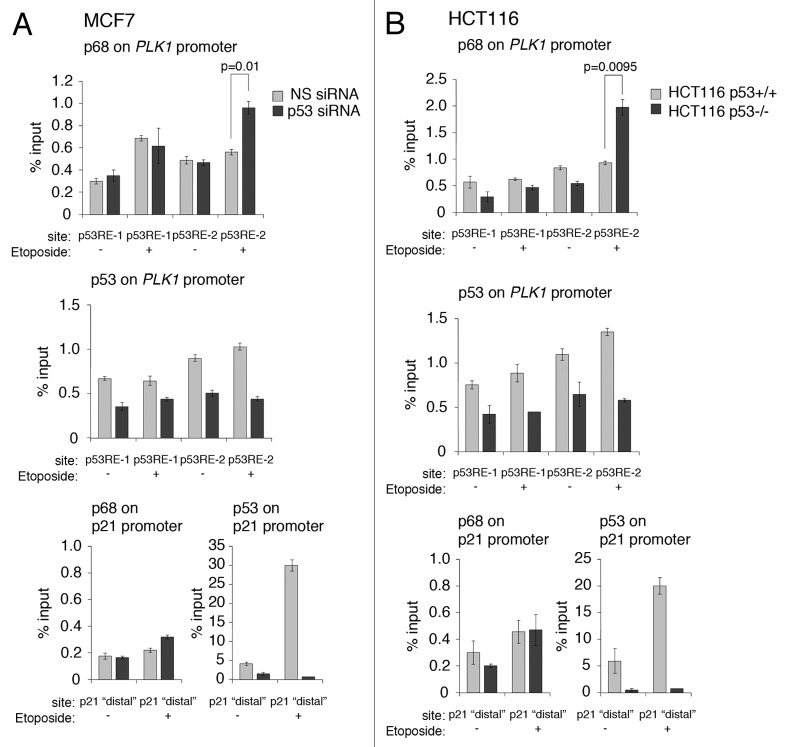Figure 8. p68 is recruited to the vicinity of the p53-responsive elements, p53RE-1 and p53RE-2, on the PLK1 promoter. (A) p53 expression was silenced or mock-silenced in MCF7 cells. The cells were subsequently treated with 20 μM etoposide for 6 hours (+) or left untreated (−) as control. (B) HCT116 cells expressing wild-type p53 (HCT116 p53+/+) or lacking p53 expression (HCT116 p53−/−) were treated with 20 μM etoposide for 6 h (+) or left untreated (−) as control. In both panels, the presence of p68 and p53 on the p53RE-1 and p53RE-2 regions of the PLK1 promoter were determined by ChIP/qRT-PCR. The effectiveness of the silencing/absence of p53 expression and the etoposide treatments were tested on the p21 promoter, which is a well-established target for p53 and p68. The results presented are mean ± SD of 2 independent experiments, each performed in triplicate. P values were calculated using Student paired t test, where P < 0.05 is considered to be significant.

An official website of the United States government
Here's how you know
Official websites use .gov
A
.gov website belongs to an official
government organization in the United States.
Secure .gov websites use HTTPS
A lock (
) or https:// means you've safely
connected to the .gov website. Share sensitive
information only on official, secure websites.
